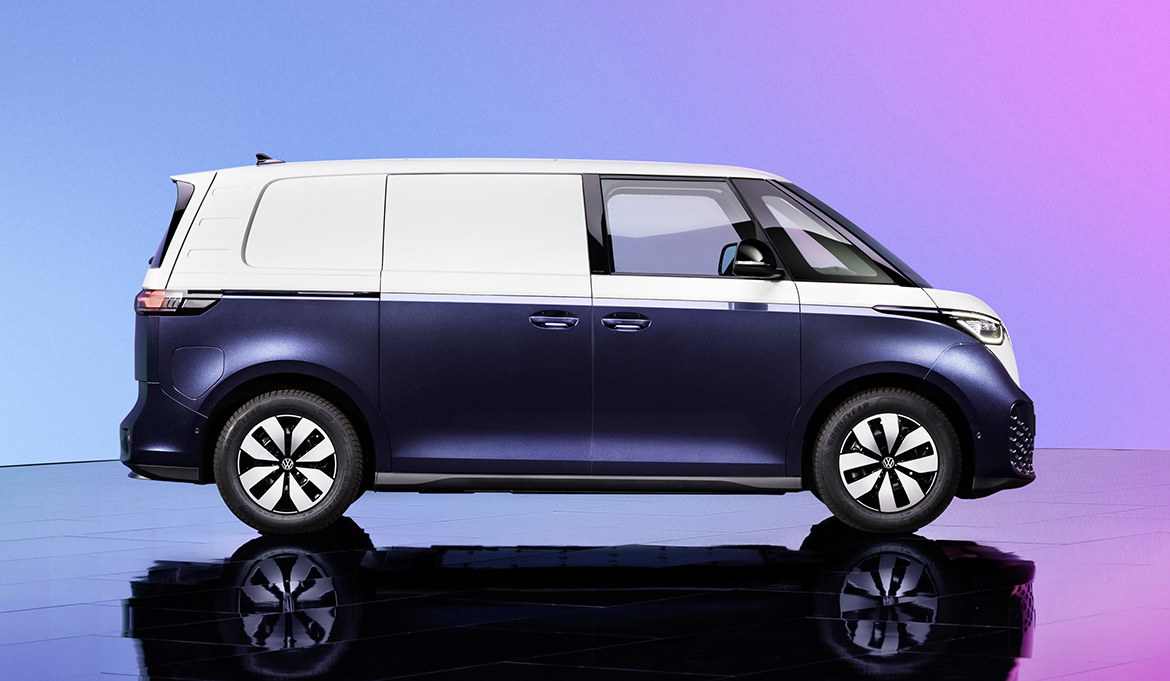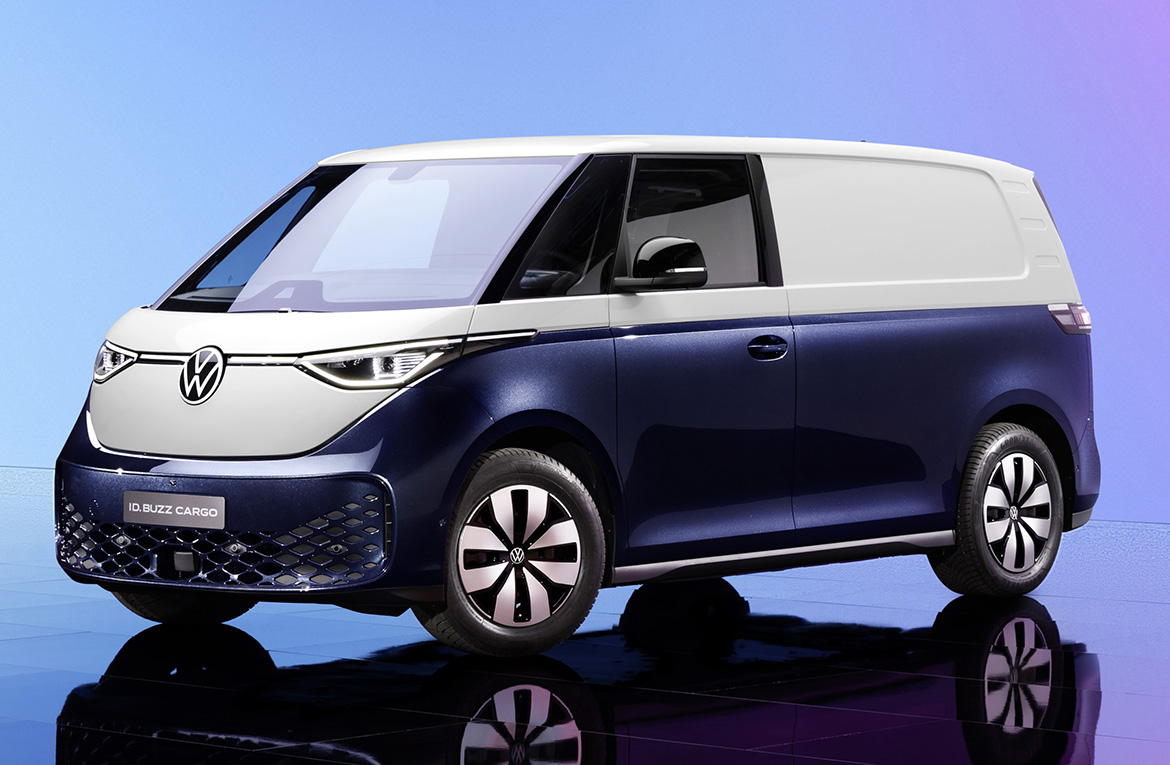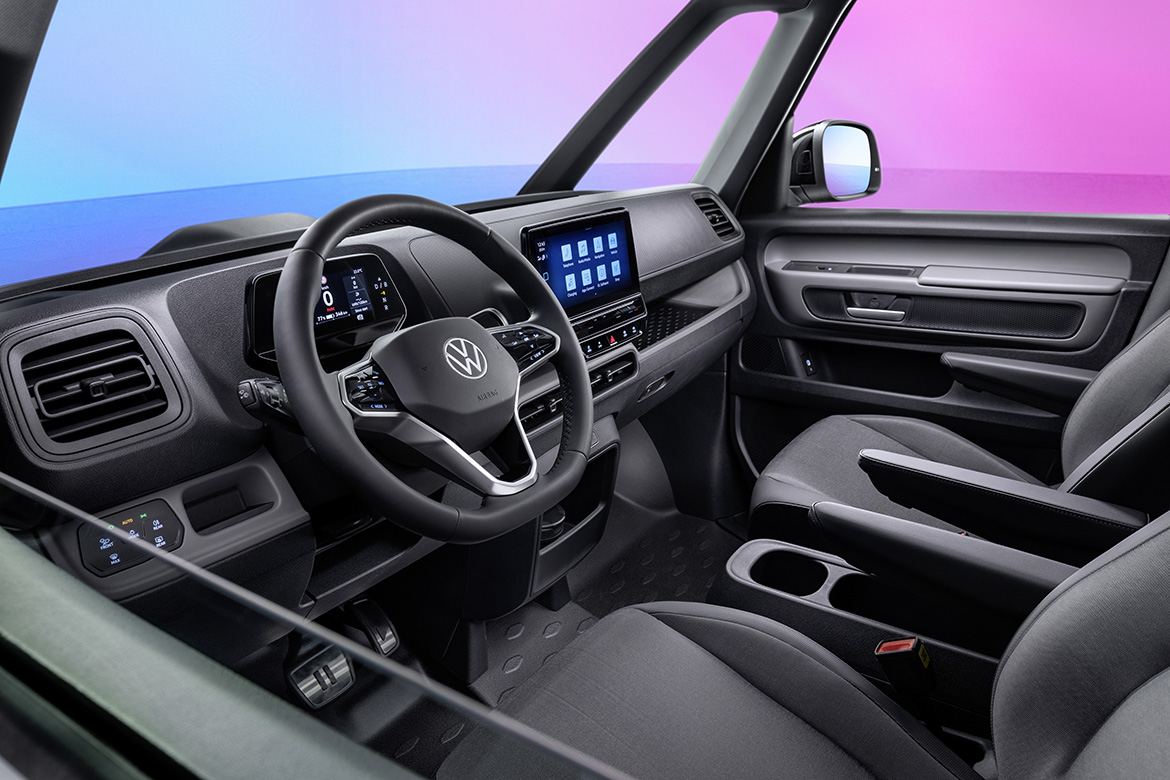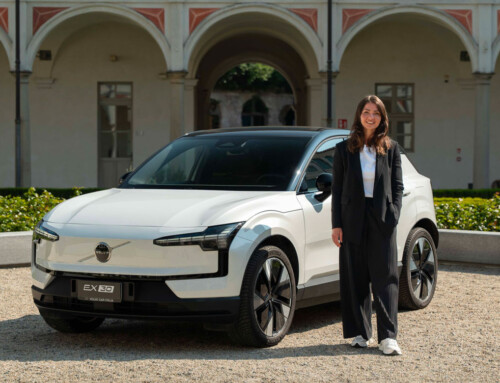It is hard to think of a more iconic work vehicle than the ID. Buzz Cargo. The design of Volkswagen’s electric commercial vehicle, made by the team led by Jozef Kabaň, has in fact taken its cue from that of the passenger version, with very few differences all aimed at practicality. The seats in the second and third rows have given way to the load compartment, as have the windows, while the large sliding hatch only remains on the right side of the vehicle, from which objects can be loaded more conveniently.
Such an efficient package, based on the Volkswagen Group’s Meb platform, lends itself to multiple uses of the vehicle, which in this case is also the first ‘electro-cargo’. The ID. Buzz wants to be more than just a means of transport, made emotional by the iconic genes of the Volkswagen van. For example, the ID. Buzz Cargo features, just like ID. Buzz, three horizontal markings on the rear pillar, evocative of the louvers that let out hot engine air on the original T1.
The load compartment, with its modern design, has plenty of space to the extent that two Euro-pallets can be stowed transversely. The load volume reaches 3.9 cubic metres, while the sustainable weight is 650 kg. In the passenger compartment we find the Cargo Box (optional) an object box that is installed between the two seats where objects can be conveniently stored. The box is removable and not only offers space for bottles, coffee mugs or pens but also has a large upper compartment in which laptops, documents, folders and anything else of small to medium size can be placed.
The ID. Buzz Cargo combines high load capacity with great manoeuvrability: its short turning radius of only 11.09 metres is particularly useful for people working on narrow city streets. Volkswagen’s electric commercial vehicle is launched with a 77 kWh battery pack (range exceeds 410 km) powering a 150 kW (204 hp) electric motor. The powerful drive allows objects weighing up to 1,000 kg to be towed via the tow hitch.














